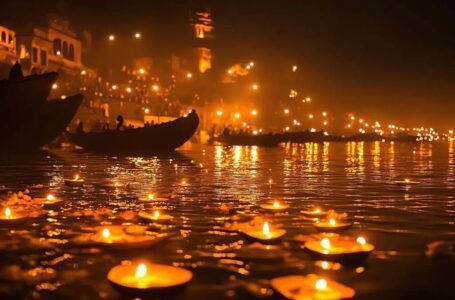The History of Indian Navy

~Anushka Sengupta
India’s naval force is part of the Indian Armed Forces competing with other two major defense forces of the country and operates by the motto “Sham No Varunah” meaning “May the lord of the water be auspicious unto us”. From ancient traditions in the Indus Valley Civilization to its contemporary position as one of the most formidable and technologically advanced naval prowess of the twenty- first century, the history of the Indian Navy is the reflection of India’s demands and aspirations for local and global ascendancy. This essay narrates the history of the Indian Navy from the ancient past to colonial transitions and post-independence phases, and reflects on the role of the Indian Navy in the construction of India’s maritime identity. India has a strong mother tradition of navigation and trading at sea and is believed to even have the earliest history of sailing in the world. The earliest known reference to an organization devoted to ships in ancient India is as early as 3000 BC when the inhabitants of the Indus Valley started seafaring.
The Indian subcontinent was also traversed by sea routes during ancient times that linked it to Southeast Asia, Africa, the Middle East, and Mediterranean Europe. There was a systematic department of naval department at that time known as Navadhyaksha under Emperor Chandragupta Maurya of the Mauryan Empire (322–185 BCE) regulating shipping and maritime operations according to Arthashastra of Chanakya. His grandson Ashoka kept a strong navy to transport his army and evangelists to Sri Lanka, and Greek embassies were sent to the court of the Maurya Empire under his reign by Ptolemy. The Cholas (9th to 13th centuries AD) were the only one to maintain powerful fleets from the ancient India to the medieval India, became masters not only of the territory between the Kaveri River and the Tungabhadra River but also the islands. As compared to other cultures, the Chola’s ships were twice as wide as other ships and recorded as one of the best naval powers in the world. Cholas created a powerful navy and led expeditions to Indonesia, Malaysia, and Vietnam, the Bay of Bengal and Persian gulf, and even attempted to invade cities of Arab and East African countries.
The Battle of Vellalar was a naval battle fought in the seas off Sri Lanka between the Chola dynasty under Rajendra Chola I and the Sri Vijaya Empire, the empire of Malay sympies which ruled much of the Malaysian archipelago. The Chola Navy was not only an armed force but a symbol of trade, and cultural expansion, as well as religion.
The disintegration of the mighty central empires and the emergence of the local powers resulted in the weakening of the naval strength of India. By the late fifteenth century, when European colonial entities were starting to arrive in India, Indian maritime power had declined considerably. The Portuguese were the first Europeans to have a strong influence on the island as a consequence of the Columbian expedition, followed by the Dutch, French, and British. Taking advantage of the desegrated political scene, these powers seized control of India’s maritime regions. Though some Indian rulers like the Marathas of the Konkan region under Kanhoji Angre offered resistance to European domination at sea, their efforts proved ineffective in deterring the rise of European navies.
The Contemporary Indian Navy, which is a blue-water navy, has its roots in the colonial times. A major maritime power, Company ships roamed through the Indian Ocean, sending out squadrons for the protection of the spice trade, but also launching bloody and mutually destructive naval raids on the Portuguese. In the early seventeenth century, the English, after their navy destroyed the Portuguese, first established an outpost in the Indian subcontinent, at Hariharpur, then undertook an ad hoc and pragmatic system of control on much of the Indian subcontinent, after the Mughals revoked the English East India Company’s monopolistic charter, in 1684 and 1692, though subsequent grants made the Company the diwan of the Bengal Presidency. This force changed its name twice to become the Bombay Marine in 1686 and the Indian Navy in 1830.
In the aftermath of the Indian Rebellion of 1857, control of India was transferred from the East India Company to the Crown. The RIM would not have had much to do with naval battles and instead have acted as a coast guard and transport fleet. In 1934, RIM became known as Royal Indian Navy (RIN). During World War II, it became active again, increasing both its fleet and its membership. Indian vessels operated in the Mediterranean, Atlantic and Indian Oceans. The war also paved the way for the professionalization of the navy, with the increasing amount of Indian training and taking command posts, although the top command still rested with British officers.
The mutiny was a reaction to the poor conditions of service, discrimination between white and Indian sailors, and privileges for white personnel in the Royal Indian Navy (RIN), combined with a growing sense of Indian nationalism. Strikes and protests were held by more than 20,000 sailors. Though the mutiny was eventually quashed, it had already communicated a powerful signal to the British about the growing nationalist feeling in the armed forces. It was a factor in forcing British designs to withdraw from India. Upon independence on August 15, 1947, the Royal Indian Navy was split between India and Pakistan. India kept roughly two-thirds of the fleet and the personnel. The Indian Navy initially suffered problems such as small fleet, scarce resources, and lack of trained Indian officers at senior levels.
India’s struggle for independence was actively shaped, influenced, and nurtured by its naval arm; despite this, the navy was never involved in an open conflict. When India became a republic in 1950, the Royal Indian Navy as it had been named since 1934 was renamed to Indian Navy. The ensign and other symbols were also Indianised. The first Indian Commander-in-Chief of the Indian Navy was Vice Admiral Ram Dass Katari, who assumed the office. The Indian Navy had not participated significantly in the 1947–48 Kashmir War, but launched into modernization and expansion almost immediately after the war. The navy’s first aircraft carrier, INS Vikrant, was purchased from the United Kingdom in 1961. This was the start of a carrier borne naval capability in India.
The Indian Navy was instrumental in liberating Goa from Portuguese rule. Naval forces blockaded the coast and supported land-based attacks, and contributed to the fall of the final European colony in India. Indian Navy’s action during the 1971 was limited to two naval operations – Operation Trident and Operation Python which had aimed to attack Karachi harbor. These were successful strikes and inflicted considerable damage to the Pakistani navy. The drowning of the PNS Ghazi, Pakistani submarine, off the Visakhapatnam coast was a major feat. The role played by the Navy in enforcing the blockade of East Pakistan, now Bangladesh was one of the key factor in the victory of India.
The war of 1971 showed the centrality of a strong navy. In the ensuing years, India has worked on indigenous-development, technological modernisation and strategic partnership. The events led to the procurement of submarines like Foxtrot class and later Sindhughosh class from Soviet Union. Indigenous warship, like the Nilgiri class frigate was installed. Establishment of the Naval Air Arm enhanced India’s ship borne aerial reconnaissance and strike potential.
The Indian Navy also progressed in missile technology, taking in “BrahMos supersonic cruise missiles”. Naval operations with allied powers like the United States, Russia and South-East Asian countries contributed to its operational readiness. The Indian Navy began the new century with visions of becoming a blue-water navy — one capable of carrying out sustained operations across deep oceans and power projection far from its home waters. INS Vikramaditya carrier, commissioned in 2013, boosted India’s power projection at the time. It was purchased from Russia to replace the ageing INS Vikrant. India also made big strides in destroyers (Kolkata-class), frigates (Shivalik-class) and corvettes (Kamorta-class). In project 75, the Scorpene-class submarines (Kalvari-class) were introduced into the Indian Navy. The introduction of INS Arihant, India’s first domestically developed nuclear-powered submarine, signified the achievement of India’s nuclear triad.
The Indian Navy has engaged in anti-piracy operations in the Gulf of Aden and the Indian Ocean. Additionally, it carries out humanitarian assistance and disaster relief (HADR) missions, such as Operation Rahat (the evacuation from Yemen in 2015) and support the tsunami in 2004. The Navy created the Andaman and Nicobar Command and enhanced surveillance capabilities in the Indian Ocean. Strategic alliances with nations like the US, Japan, and Australia, particularly through the QUAD coalition, demonstrate India’s increasing significance in maritime affairs.
Modernising a navy is an expensive business, and financial constraints can sometimes stymie progress. It creates a strategic challenge and concern that the Chinese Navy is expanding its naval operations in the Indian Ocean ( with the creation of bases in Djibouti, Sri Lanka and Pakistan). Closing the gap with more developed navies calls for swift technology development and partnerships. Babu Vagu says, “Indigenous ship construction is getting delayed because of bureaucratese, but nobody is having the power to pull up and correct those making mistakes, who are delaying commissioning of naval ships.” In a series of long-range plans, the Indian Navy has revealed its blueprint of broad plans to New Delhi, to increase the fleet size, provide more underwater assets, improve cyber, space warfare and infrastructure bottlenecks. The evolution of Indian Navy is a reflection of the maritime indomitably of India and the advancement of strategic thinking.
From centuries of tradition in seafaring to the present day status as one of the leading navies of the world, the Indian Navy has matured into a balanced and powerful force, an instrument of national policy and a modulator of regional stability. With India aiming to be a pivotal player in the Indo-Pacific, the Indian Navy will continue to lead the country’s diplomatic, strategic and humanitarian outreach. Rooted in a rich legacy and driven by innovation, the Indian Navy is on course to becoming a stronger and self-reliant force with its global engagement.


